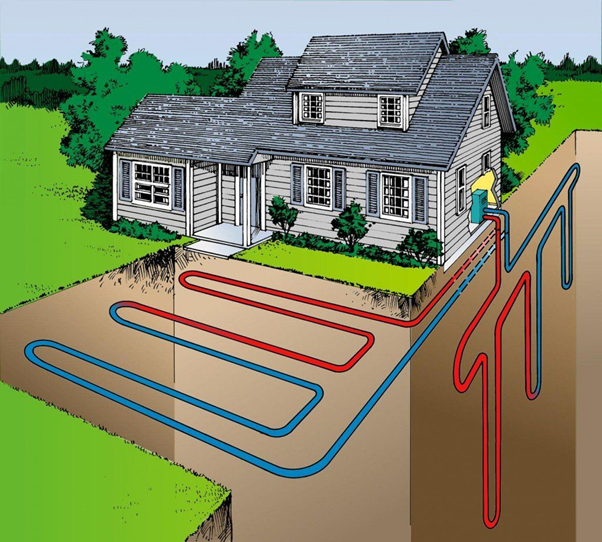Ground source heat pumps have emerged as a potential technology in the search for sustainable and efficient heating and cooling solutions. Ground source heat pumps, also known as geothermal heat pumps, use renewable energy from the Earth to offer environmentally friendly heating and cooling for residential and commercial structures. This article investigates the principles of operation, advantages, and implications of ground source heat pumps in promoting energy efficiency and environmental conservation.
Using renewable energy from the Earth
Ground source heat pumps use the Earth’s inherent heat energy, which is constant underneath the surface. Earth source heat pumps, as opposed to air source heat pumps, collect heat from the ground, where the temperature is largely steady throughout the year. Ground source heat pumps provide an environmentally beneficial alternative to standard heating and cooling systems by exploiting this renewable energy source.
The operation of ground source heat pumps
Ground source heat pumps operate by circulating a heat transfer fluid via an underground network of pipes known as ground loops. Depending on available space and soil conditions, these pipes are put vertically or horizontally in the ground. The heat transfer fluid takes heat from the ground and transports it to the heat pump unit within the building. Heat is extracted from the fluid by the heat pump and transferred to the interior environment for heating. The process is reversed in the cooling mode, with heat absorbed from the interior area and discharged into the ground.
Energy savings and efficiency
Ground source heat pumps are well-known for their great efficiency and ability to save energy. Ground source heat pumps may work consistently throughout the year since the ground temperature is largely stable, even during adverse weather conditions. This stability adds to a high coefficient of performance (COP), which means that the heat pump generates many units of heat or cooling energy for every unit of power used. Users benefit from considerable energy savings and lower electricity costs as a result of this efficiency.
Options and considerations for installation
Installation of ground source heat pumps requires careful evaluation of available land or space. Vertical and horizontal ground loop layouts are the most common. Vertical installations require the digging of boreholes to great depths, making them ideal for places with limited horizontal space. Horizontal installations, on the other hand, need a wider plot of land in order to bury the ground loops at a shallow depth. The selection of various arrangements is influenced by considerations such as available space, soil conditions, and money.
Long-term savings and environmental advantages
Ground source heat pumps have significant environmental advantages. These systems dramatically minimise greenhouse gas emissions when compared to fossil fuel-based heating and cooling systems since they utilise renewable energy from the earth. They also minimise dependency on non-renewable energy sources, so boosting sustainability and lowering carbon impact. Ground source heat pumps also have a lengthy lifetime, with properly constructed and maintained systems lasting decades. This lifespan provides long-term savings since they need little maintenance and provide consistent energy prices over time.
Conclusion
Ground source heat pumps are a green and effective way to heat and cool buildings. These systems provide eco-friendly heating and cooling while saving substantial energy by using the Earth’s renewable energy. Ground source heat pumps help to environmental conservation and long-term financial advantages when properly installed and have a long lifetime. Adopting this cutting-edge technology is a huge step toward a greener, more sustainable future.





